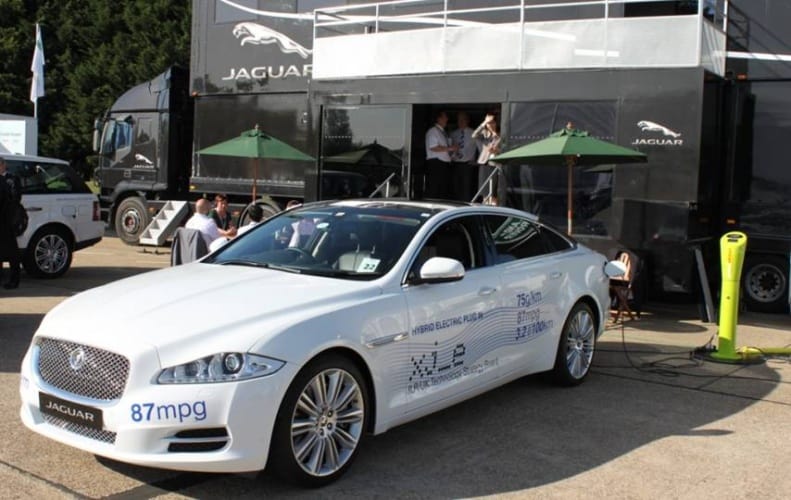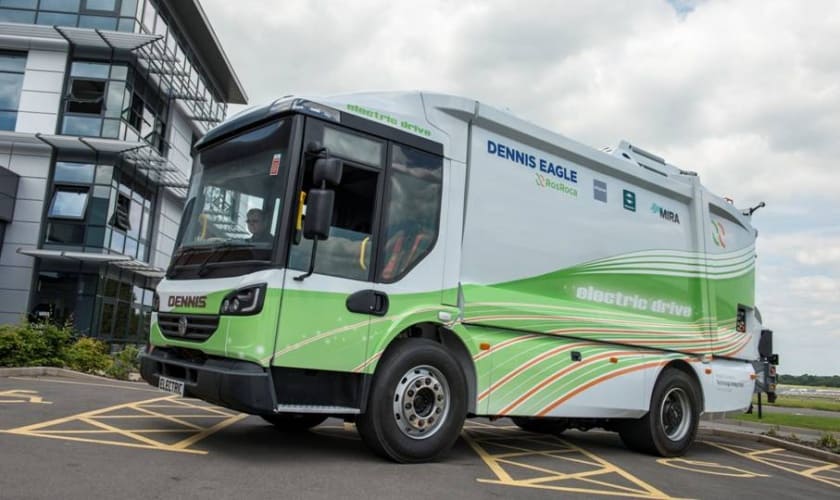When considering the likely rate of engineering development, or the weather for that matter, predictions are unwise. At the time of writing, we’re experiencing something of an Indian summer. In October 2008 - at the very first of the Cenex Low Carbon Vehicle showcase events, we faced a combination of snow and uncertainty – outright scepticism in some quarters, around the commercial viability of low carbon vehicles. Given the number of prototype vehicles at that first event – just five, we faced anything but a guarantee that this area of automotive innovation would gain traction.
Fast forward six years and the 2014 Cenex event has grown to feature around 200 exhibitors - now unquestionably the industry’s premier showcase for low carbon vehicles and technologies. More than that, the range of participants, from across the automotive sector and beyond, is testament to the sea-change in both thinking and low carbon innovation over the intervening six years. The event is an inspiring window on the future of the transport sector.

Sector innovation
The challenge of creating a low-carbon economy has received increased impetus as a result of competition from new players like India and China – and has inspired a fresh wave of vision and innovation.
That innovation hasn’t occurred in a vehicle industry-specific vacuum, but with inspiration and cross-fertilisation from across many different industries, integrating processes from other manufacturing sectors. For example, additive manufacturing – 3D printing as it is commonly known, is increasingly being used as a cheaper, quicker alternative to injection moulding and CNC techniques, while one-piece, monocoque manufacturing of vehicle chassis and bodyshells, utilising composites precisely optimised for light weight and rigidity are now increasingly to the fore. Additionally, companies like Axon, Tallent and WMG are doing brilliant work on composite suspension components, funded through our Composite Ultra Lightweight Suspension Programme.
“It’s now easy to predict a sunny future for the UK’s innovative engineering efforts in the low carbon vehicles sector
Coordinated innovation
We’ve coordinated much of our work to sponsor automotive innovation through our Low Carbon Vehicles Innovation Platform, which acts as a rallying point for UK companies to focus their innovation efforts around, involving players from across the industry to jointly invest, promoting UK-based R&D in low carbon vehicle technologies, developing and strengthening new and existing UK supply chains.
The Innovation Platform has leveraged £350 million of innovation investment for low carbon vehicle research and development since it was established in 2007 and has run Europe’s largest real-life trial of ultra low carbon vehicles: ‘The Ultra Low Carbon Vehicle Demonstrator’. Co-funded by Innovate UK with DfT, AWM, ONE and the South East of England Development Agency, it involved public and private investment of over £50m.
Demonstration programmes were run by eight consortia around the country, including several of the major car manufacturers as well as universities, local authorities and power companies, resulting in around 340 vehicles taking part in extended trials on the roads.
We’re also working closely with the automotive industry, including the Automotive Council and the Advanced Propulsion Centre, which has attracted £1 billion investment from industry and government over 10 years to fast-track technology development for vehicles of the future.
Mainstreaming low carbon vehicles
Our overall focus has been on ‘sticky’ technologies (with broad, sector-wide appeal, such as materials, drive trains, energy storage and power electronics). Industry has embraced these core themes, with manufacturers now embedding these key low carbon technologies not just in low carbon-specific models, but increasingly as integral parts of their wider model ranges.
A great example of the benefits of this focus on ‘sticky’ technologies is the gyrodrive bus flywheel from GKN land Systems and partners, which delivers fuel savings by recycling the energy a conventional bus loses as it slows for a stop
Our £20m REEVolution project, co-funded with the Office for Low Emission Vehicles, with challenging project targets, including sub 50g/km tailpipe CO2 emissions, has seen hybrid ‘Range Extended Electric Vehicles’ successfully developed by Jaguar Land Rover, Nissan and Lotus, with the fruits of those labours now commercially available.

Commercial vehicles
Commercial fleet operators were also given a glimpse of the very near future at Cenex, with the very first UK reveal of the Hybrid Urban Commercial Vehicle – half funded by Innovate UK, and developed by Dennis Eagle with consortium partners MIRA, Magnomatics and MTL. Featuring a monocoque design with smart electronic systems, it is designed to run on battery power for an eight-hour shift.
We are also learning from our ongoing Low Carbon Truck Demo Trial - evaluating the performance of low-carbon HGVs. Involving 28 partners, including household names like John Lewis, Tesco and United Biscuits. By July this year, about 270 trucks were already on the road - 75% of the planned total.
There is a lot to come from this project over the next few years, but our funding of this trial has already made the UK the pacesetter in Europe for the evaluation of dual-fuel HGVs.
The future is set fair
Our ongoing programme of support for innovation in low carbon vehicles will continue, though our high-level partnerships with the automotive industry, our continued investment in the Transport Systems Catapult and our themed competitions for funding (with a commitment of £30m this year alone, seeking solutions to the sustainability challenges faced by the industry).
Despite fairly humble beginnings – it’s now easy to predict a sunny future for the UK’s innovative engineering efforts in the low carbon vehicles sector with them becoming not the exception, but the norm.
Iain Gray is chief executive of InnovateUK




Project to investigate hybrid approach to titanium manufacturing
What is this a hybrid of? Superplastic forming tends to be performed slowly as otherwise the behaviour is the hot creep that typifies hot...